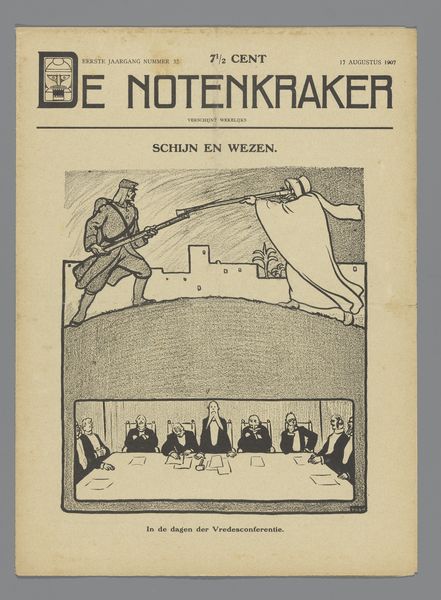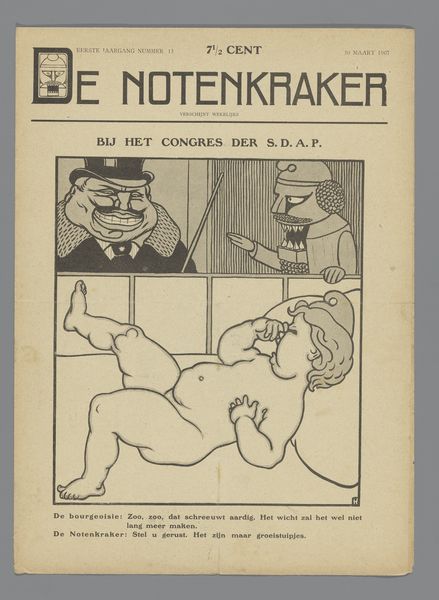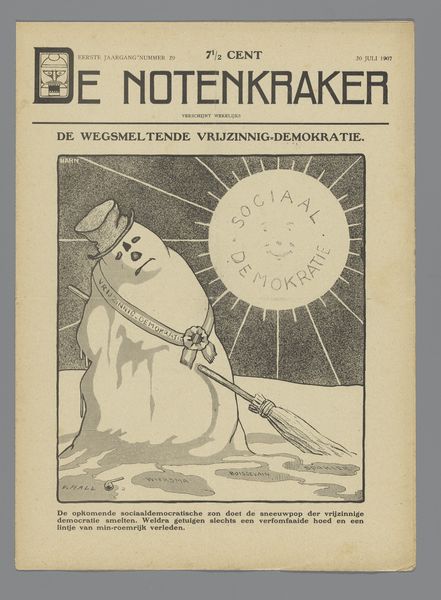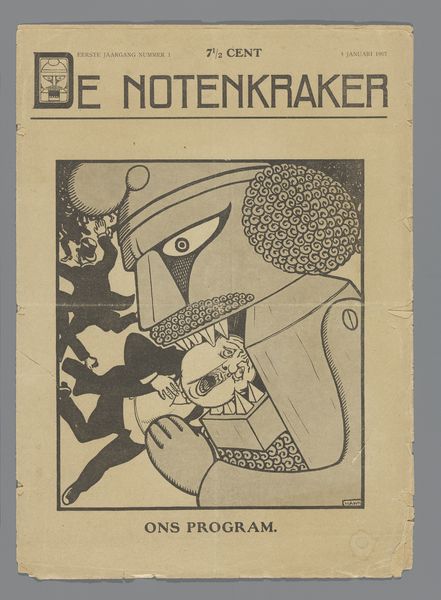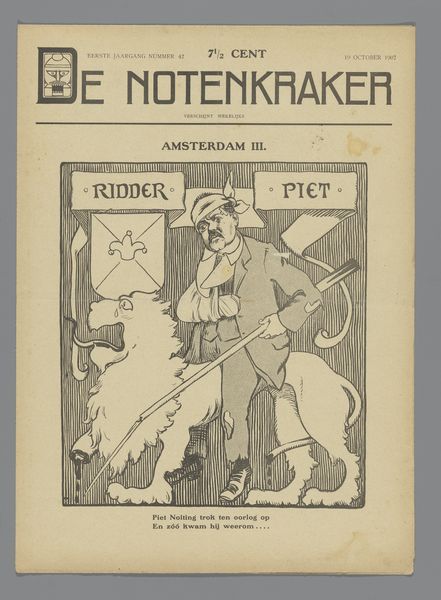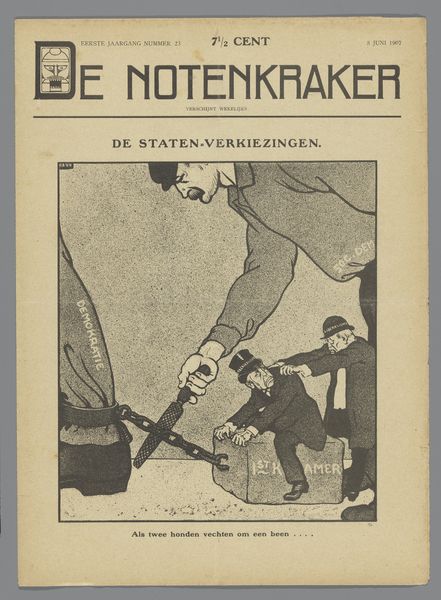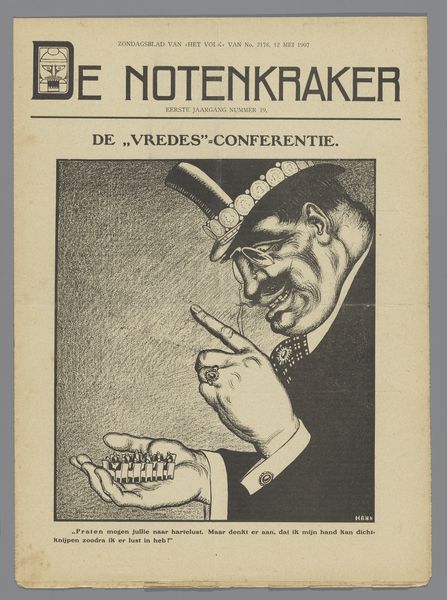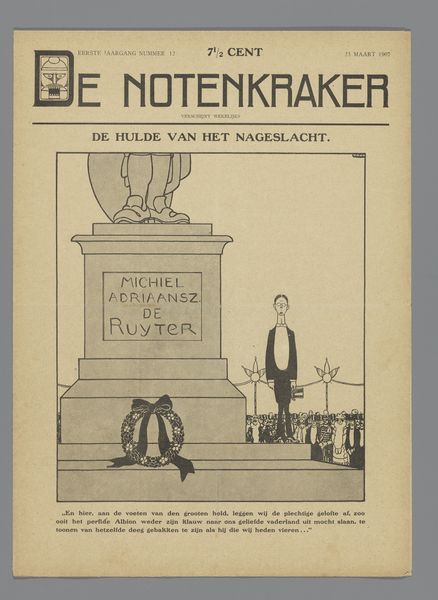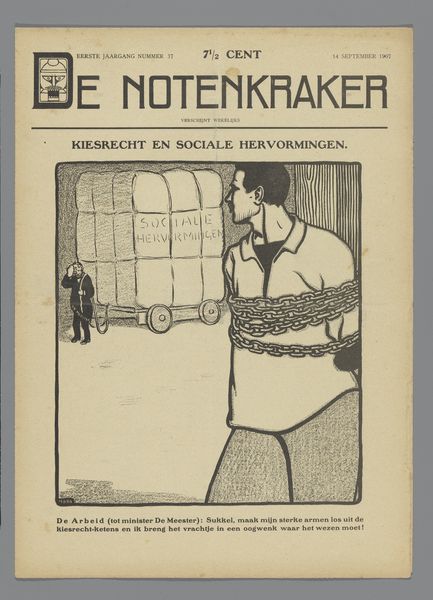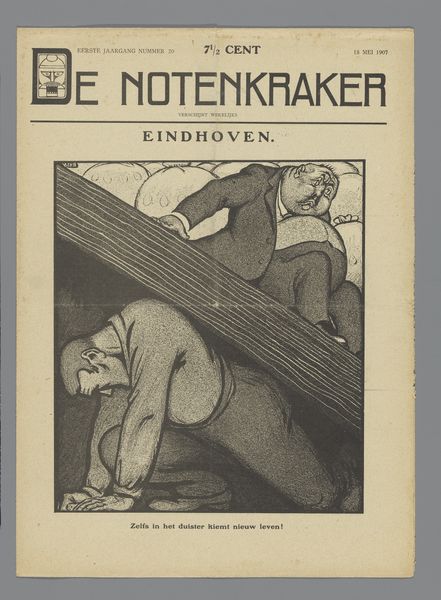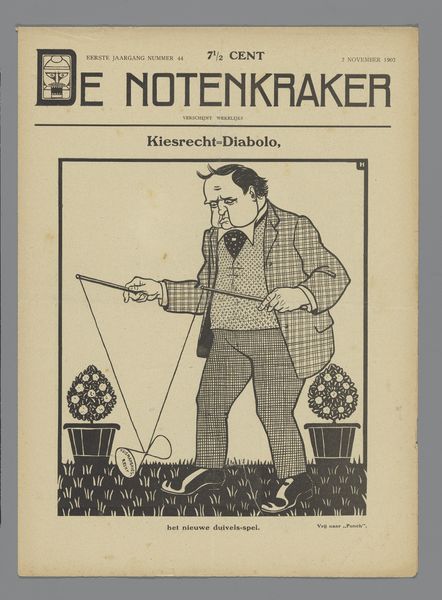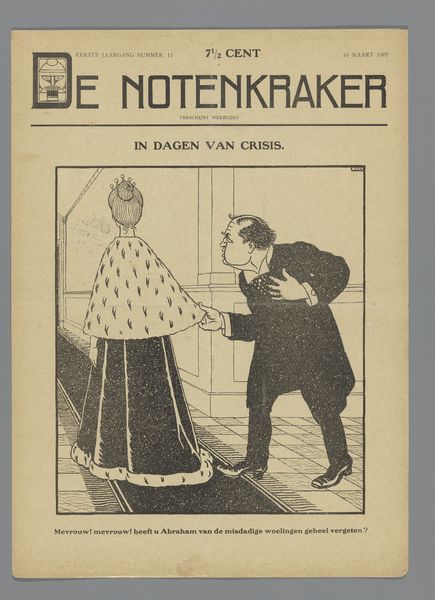
drawing, print, paper, ink, poster
#
drawing
#
art-nouveau
# print
#
caricature
#
figuration
#
paper
#
ink
#
line
#
paper medium
#
poster
Dimensions: height 348 mm, width 252 mm
Copyright: Rijks Museum: Open Domain
Editor: Here we have a print titled "De Notenkraker, 28 december 1907 / Oud en Nieuw," potentially from around 1907 to 1928, by Albert Hahn. It's ink on paper, a newspaper poster. What strikes me is the sheer physical effort conveyed in pushing that massive snowball. What do you make of it? Curator: Looking at it from a materialist perspective, I'm drawn to the socio-political context. The 'snowball' says, "Algemeen Kiesrecht" which translates to "universal suffrage". Hahn is known for political cartoons published in the socialist magazine *De Notenkraker*. He uses easily accessible ink and printing methods. The image isn't precious, and can be reproduced easily for wide distribution, meant to spur conversation and political action amongst working-class people. See the shadowy figure in the background representing the opposition? What do you think about his choice of subject matter, a baby, pushing this burden into the future? Editor: It's powerful knowing it’s universal suffrage, that it’s meant to bring democratic values into society. It speaks to the future burdened by the present; it may have been intended as uplifting or depressing, it makes me curious to read the associated article. Curator: And understanding the physical labour required to create prints – the etching, the press – reinforces the parallel of collective labor needed for political change. Considering Hahn's other works and socialist leanings, he is most likely hoping to galvanize momentum. The cartoon makes very real to us now a political struggle that seems almost antiquated. Editor: I see how his choice of medium, specifically printmaking intended for mass consumption, amplified his social message in a tangible, accessible way, democratizing the art experience. Curator: Exactly. It reminds us art is always produced through a social context; how we consume artwork affects how the message is distributed. Editor: Thank you, this conversation has enriched my understanding of Hahn's choices of materials, methods, and socio-historical environment of political prints. Curator: It highlights how we can study art through different avenues.
Comments
No comments
Be the first to comment and join the conversation on the ultimate creative platform.
